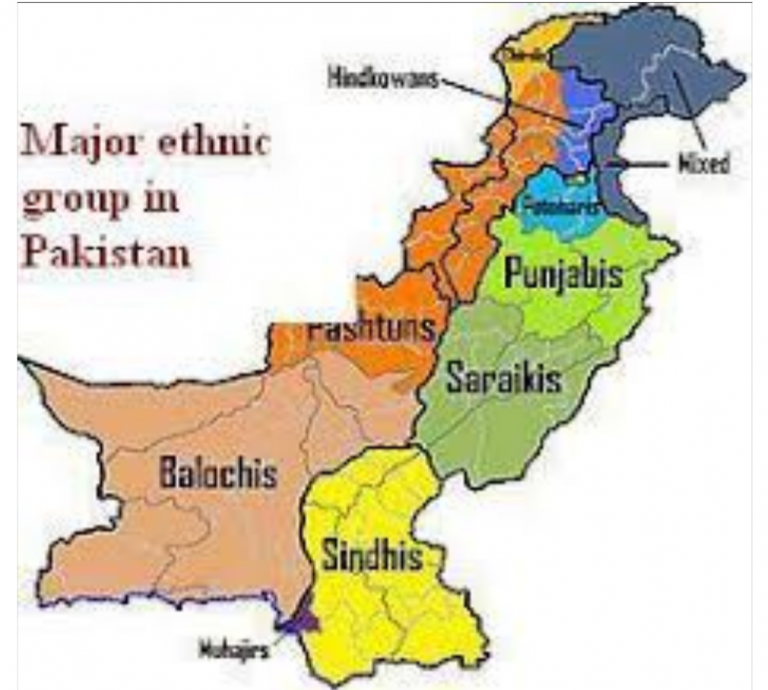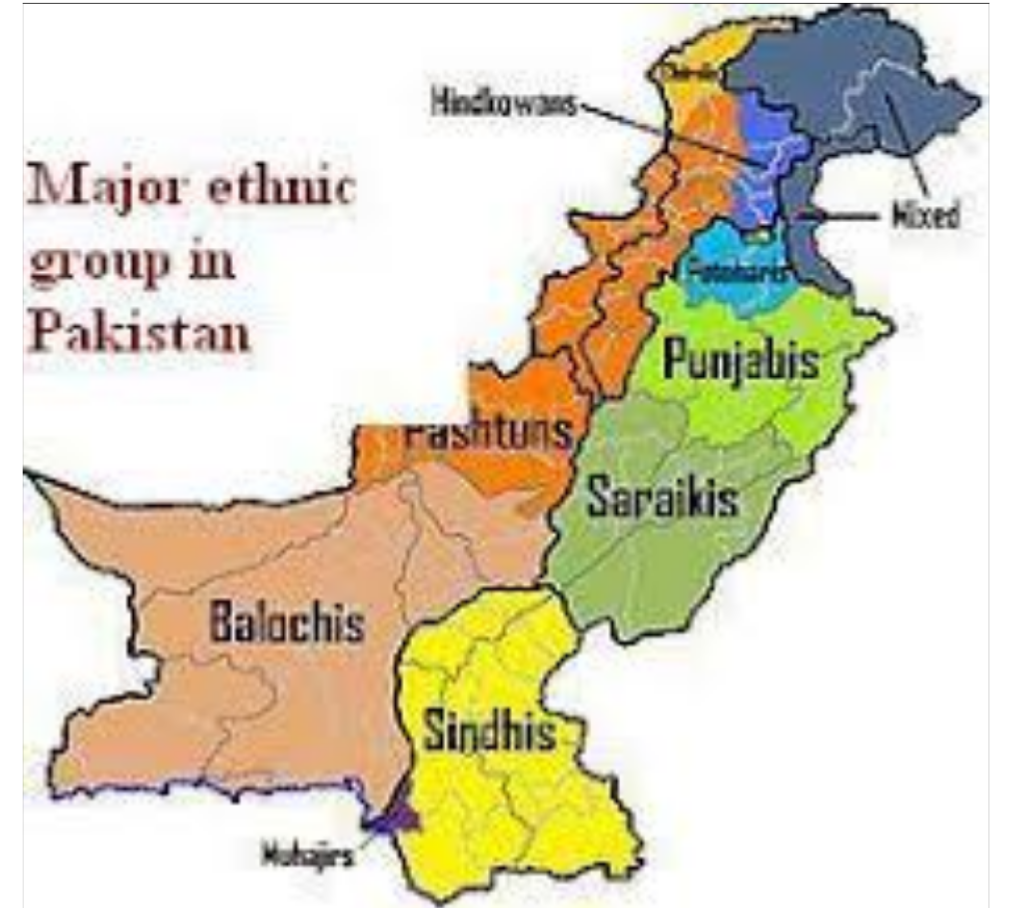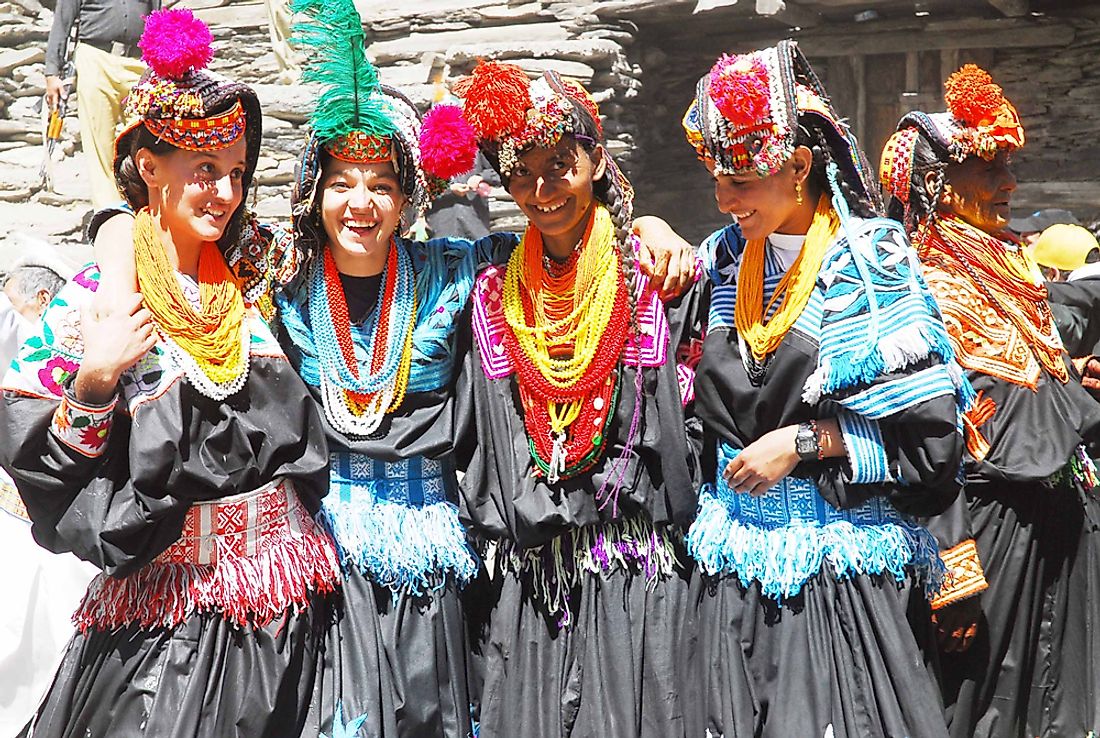
 Why do some people give up speaking and transmitting their inherited language, even if this is one of the major languages of the world and their group is the most powerful group in the country?
Why do some people give up speaking and transmitting their inherited language, even if this is one of the major languages of the world and their group is the most powerful group in the country?
By Joan L.G. Baart
The causes of language loss
So, when looking at the sociolinguistic picture of Pakistan, we are faced with the following question: Why do some people give up speaking and transmitting their inherited language, even if this is one of the major languages of the world and their group is the most powerful group in the country, while others hold on to their language, even if they are surrounded by more dominant groups and languages?
In order to tackle this question, let us begin with a closer look at the situation of the Kohistani languages. First of all, it seems to me that the process that Biddulph and Grierson were observing in their days was different from the processes that are currently affecting Punjabi. Biddulph and Grierson were watching how the Pathans were actually expanding their geographical area by migrating into those valleys and villages, setting up businesses there as well as homes. They were the socially, economically and politically dominant group, and over time they gradually took over these villages as more and more of them settled there. So the spread of Pashto here was related to a migration of Pashto speakers.
However, it is also possible for a dominant language to spread without an actual migration of its speakers. Typically this second kind of language spread is related to the large power inequalities that emerge between groups of people as a result of modernization. When modernization arrives, the traditional means of subsistence of an indigenous community often become unsustainable. In order to make a living, they have to look to the larger society and economy that have engulfed them and they have to learn the languages that are associated with the powerful groups in that larger society. It is these languages that may open the doors of advancement for them. As a result, the old languages lose much of their utility and come to be associated with backwardness (they come to be seen by their own speakers as “ghettoising”, as Tariq Rahman would say), while the dominant languages are associated with progress. In such cases, then, the dominant languages spread not because their speakers settle in new areas, but because members of the indigenous communities give up their inherited languages and shift to the dominant languages. (For extensive studies of correspondences between language use and the distribution of power in Pakistani society, see Tariq Rahman’s work cited above, and also his 1996 work, Language and Politics in Pakistan.)
 It is this second type of onslaught that is putting pressure on Punjabi (with Urdu and English in the role of dominant languages), and while the Kohistani languages have survived the first type of onslaught, we still have to see if they can survive this newer type of onslaught. The modernization process in the Kohistan areas took off in the 1960s, the construction of roads being a major factor. Before the 1960s, changes happened only slowly. Since the 1960s, the pace of change has accelerated drastically.
It is this second type of onslaught that is putting pressure on Punjabi (with Urdu and English in the role of dominant languages), and while the Kohistani languages have survived the first type of onslaught, we still have to see if they can survive this newer type of onslaught. The modernization process in the Kohistan areas took off in the 1960s, the construction of roads being a major factor. Before the 1960s, changes happened only slowly. Since the 1960s, the pace of change has accelerated drastically.
Let us look more closely at one example. The predominant language of the upper parts of Dir Kohistan is called Gawri (for a description see Baart 1999. Gawri and Kalam Kohistani are different names for the same language.). In this area, there are two villages (Patrak and Birikot) where in recent decades an almost complete shift took place from Gawri to Pashto (Zaman 2002a). People over 30 or 40 years can still speak Gawri, but the younger generations cannot. There are some five other Gawrispeaking villages in this area, and there the people vigorously maintain their indigenous language. So why is Gawri maintained in most of the villages, but not in these particular two?
Marriage patterns are an important factor here. The people in the two villages that have switched languages prefer to take their wives from the lower, Pashto-speaking areas of the valley. The people from the other villages prefer to marry within the group. According to my information, the villages that prefer Pashto-speaking wives do so because they feel that those women are more developed, more educated, exercise better cleanliness and take better care of the children and the household. So they feel that such marriages lead to an increased quality of life in their communities and to better opportunities for their children. The change probably started with one or a few “pioneers” taking Pashto-speaking wives. Then over time, people around them noticed the benefits and started to do the same, and then before you knew it everybody was following their example. In these mixed families, the children are raised in Pashto, the language of their mothers, and do not learn proper Gawri, the language of their fathers. The fathers allow this to happen because they associate Gawri with backwardness and Pashto with progress.
Maybe the most intriguing question here is not why the two villages mentioned above shifted from Gawri to Pashto, but why, in the face of the apparent advantages of Pashto, the other five villages are maintaining their indigenous language. I have one speculation to offer here. Yes, there are advantages to shifting to a more powerful language, but there are also costs to giving up one’s own language (see also Nettle and Romaine 2000:87). Human beings are usually concerned with maintaining a good standing in their community. In many situations, the community is of vital importance to one’s survival. For instance, if you have lost your good standing in the community, you may not be able to find a wife or a husband, or to find spouses for your children; you may not have the advantage of exchanging labour with others (you help them with their harvest, they help you with your harvest), and they may not come and help you in times of emergency. If your reputation is very bad, you may be thrown out of the area altogether.
In other words, belonging in one’s community is of vital importance. Language is a marker of identity for the community. Therefore, if you want to belong to them, it is important that you speak that language just like the other members of the community.
For somebody in a close-knit community to give up passing on the indigenous language to his children, is to take a risk. If the other households in the community do not follow his example, his children will be outcasts when they grow up. Therefore this risk is an incentive for continued transmission of the inherited language to the next generation. It counterbalances to some extent the perceived benefits of shifting to a more powerful language.
I end this section with an unambiguous example of community-wide language shift.
(Continues)
________________________
About the Author
German Scholar Joan Baart did Ph.D., Linguistics, from Leiden University, 1987 and M.A., Linguistics, Leiden University, 1982. He was a Senior Linguistics Consultant of SIL International and Language Development Team Leader for SIL Eurasia. SIL International is a global, faith-based nonprofit that works with local communities around the world to develop language solutions that expand possibilities for a better life.
The research paper was read at Conference on The State of the Social Sciences and Humanities: Current Scenario and Emerging Trends held in Islamabad on September 26-27, 2003
Click here for Part I